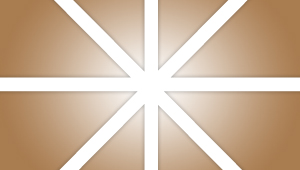Kidney Stones
Kidney stones are formed for many reasons. The most common reasons are fluid loss, foods that contain high amounts of chemicals and chronic kidney infections. The stones are caused by chemicals that build up in the kidneys during the normal process of filtering the waste products from the blood and not excreted fully as urine. The stones may stay in the kidney or move into the urinary tract.
There are four types of kidney stones:
- Uric Acid Stones: is caused by an overproduction of uric acid or when too much acid is excreted.
- Infection Stones/Struvite Stones: is caused by bacteria in the urinary tract affecting the chemical balance of the urine.
- Cystine Stones: is caused by too much cystine, an amino acid in protein.
- Calcium Stones: is caused by excess calcium in the urine.
Symptoms
The symptoms of kidney stones are usually determined by the location, size and shape of the stone. Many stones cause sudden and severe pain, blood in the urine and infection. Other stones may cause nausea or frequent, burning urination.
Once symptoms occur the following diagnostic tests may be performed to evaluate whether or not cancer is present in the bladder:
- Urine culture: a urine sample is tested for signs of bacterial infection.
- Urinalysis: a urine sample is tested to discover whether or not blood is present in the urine.
- Blood test: a blood sample is taken to determine Creatinine level, which is indicated the kidney function; BUN and electrolytes levels, which detects dehydration; calcium level, which detects hyperparathyroidism and a complete blood count, which detects infection.
- Intravenous pyelogram (IVP): a series of special x-rays is taken of the kidneys and bladder after injecting a contrast agent (dye) into a vein.
- CT scan or CT urogram: a series of special x-rays taken of the abdomen, pelvis with particular attention to the kidney, ureters and bladder.
- Ultrasound: uses high-frequency sound waves to produce "3-Dimentional" pictures of internal structures.
Treatment
Some of the treatment options for kidney stones depend on the size and type of the stone, the underlying cause and whether the condition recurs.
- Expectant Therapy: uses a "wait and see" approach to allow the stone to pass naturally by increasing fluid intake and straining the urine to collect the stone for analysis.
- Medications: uses different types of drugs depending on the type of stone such as diuretics for calcium stones; postassium citrate or allopurinol for uric acid stones; penicillamine and tiopronine for cystine stones.
- Ureteroscopy: uses a fiberoptic instrument inserted through the urethra and passed through the bladder to the stone were it is either removed or broken apart by a laser or similar device.
- Lithotripsy: uses an instrument, machine or probe to break the stone into tiny particles that can pass naturally.
- Ultrasonic lithotripsy: uses high frequency sound waves delivered through an electronic instrument inserted into the ureters to break up the kidney stone.
- Electrohydraulic lithotripsy(EHL): uses electric shock waves delivered through a flexible instrument to break up the kidney stone.
- Extracorporeal shock wave lithotripsy (ESWL): uses highly focused impulses projected outside the body to destroy kidney stones anywhere in the urinary system.
- Percutaneous Nephrostolithotomy (PCN): uses an instrument inserted through an incision made in the skin to break up and remove the kidney stone.
- Open Surgery: uses an incision made in the back to extract the stone from the ureters or kidney.




